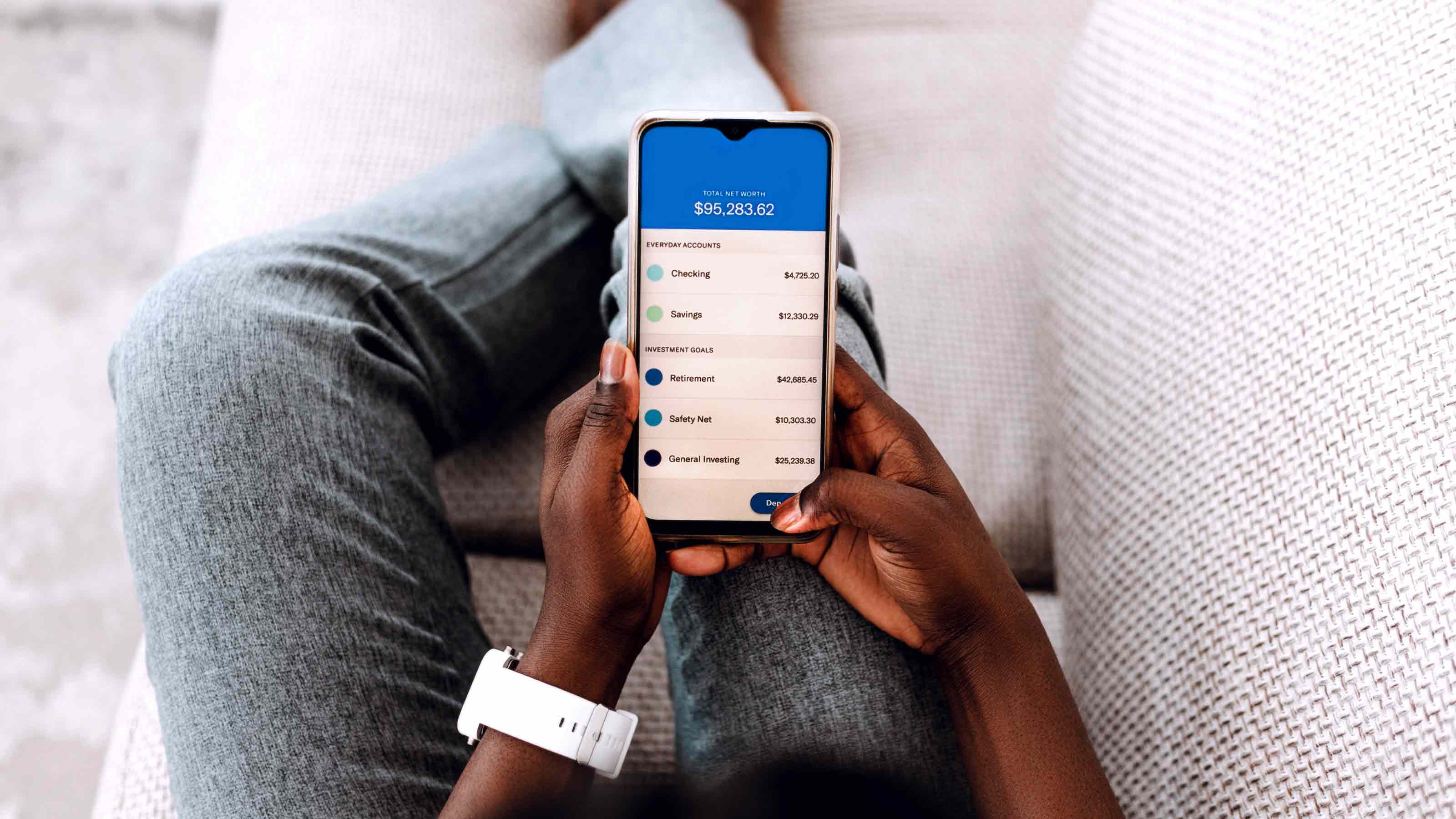Is Your Brokerage Account Safe?
Most investors have several layers of protection if the firm that holds their stocks, bonds and other assets goes under.

Please can you clarify what SIPC does? I called my brokerage firm to ask about the safety of my investment account, which is not covered by FDIC. They told me not to worry because my securities and cash are covered by SIPC. What does SIPC do if my brokerage firm goes under?
The Securities Investor Protection Corp. (SIPC) helps protect account holders if a brokerage firm goes bust. It's an important safety net that can help you worry less about the stability of your brokerage firm. But there are some key differences between how SIPC and the Federal Deposit Insurance Corp. provide protection, and remember that while SIPC can come to the rescue in cases of bankruptcy or fraud, it does not protect you against market losses.
Congress created SIPC in 1970, and nearly all brokerage firms registered with the Securities and Exchange Commission must be members. It covers stocks, bonds and other assets held at a brokerage firm that gets into financial trouble (the FDIC, on the other hand, covers bank deposits).

Sign up for Kiplinger’s Free E-Newsletters
Profit and prosper with the best of expert advice on investing, taxes, retirement, personal finance and more - straight to your e-mail.
Profit and prosper with the best of expert advice - straight to your e-mail.
Investors, however, have another layer of protection from bankrupt brokerages even before SIPC needs to step in because the SEC has strict rules about segregating the firm's money from the customers' investments. Even if a broker goes under, the investors' money should still remain intact.
"Even if a firm is in very serious trouble, it can either merge with another brokerage firm or sell part of its business," says Stephen Harbeck, president and chief executive of SIPC. "We only get involved when a firm used up its capital and has misappropriated customers' securities." SIPC did not need to get involved, for example, when Bear Stearns was acquired by JPMorgan Chase in March.
If a brokerage firm fails, SIPC first tries to transfer the investors' securities to another firm. If that doesn't work, then it attempts to rebuild the investors' portfolios, even buying new stocks or bonds to make up for any missing shares. To the extent possible, "We give you exactly what was in your account, and if we have to buy it, we will," Harbeck says. If the investments aren't available, SIPC will give you cash based on their value when the brokerage failed.
SIPC first returns your share of the broker's remaining assets, then uses its own funds (up to $500,000 per account, including a $100,000 limit on cash) to buy the same number of shares that you originally owned. That $500,000 limit only applies to the maximum amount SIPC will spend on its own to make up for any missing securities; not the total amount of money you can get back. If many of the customers' assets remain intact at the brokerage firm, then you can get back a lot more than that SIPC limit -- which is a key difference between how SIPC protects brokerage customers and how FDIC covers bank deposits.
In the rare case when an investor's losses exceed SIPC's limits, the difference usually is covered by brokers' supplemental insurance -- often provided by Lloyds of London or a new firm called CAPCO, the Customer Asset Protection Company, which provides excess SIPC coverage to 15 major brokerage firms, such as Goldman Sachs, Morgan Stanley, Raymond James and Wachovia Securities.
It's been extremely unusual for investors to max out their SIPC coverage, though. In the history of SIPC, only 349 people have not received the full value of their accounts from their prorated share of the firm's assets plus SIPC coverage, says Harbeck, who explains that most of those cases happened before 1978, when the maximum SIPC could advance was $50,000, rather than today's $500,000 limit. "With the current limits of protection and the tightening of the regulations protecting customer assets from being used as part of the broker firm's business, it's quite rare," he says.
Even though your assets should be protected if your brokerage goes bust, you may lose access to your money for a while. If SIPC takes over, it tends to take from one week to two or three months to get control of your account, or longer if the brokerage firm kept shoddy paperwork or was involved in fraud. SIPC does not protect against market losses while your account is in limbo.
For more information about how SIPC works, and to make sure your brokerage firm is a member, see the SIPC Web site.
For more information about how the FDIC works, see Is My Bank Safe? Also see the Deposit Insurance section of the FDIC Web site.
Get Kiplinger Today newsletter — free
Profit and prosper with the best of Kiplinger's advice on investing, taxes, retirement, personal finance and much more. Delivered daily. Enter your email in the box and click Sign Me Up.

As the "Ask Kim" columnist for Kiplinger's Personal Finance, Lankford receives hundreds of personal finance questions from readers every month. She is the author of Rescue Your Financial Life (McGraw-Hill, 2003), The Insurance Maze: How You Can Save Money on Insurance -- and Still Get the Coverage You Need (Kaplan, 2006), Kiplinger's Ask Kim for Money Smart Solutions (Kaplan, 2007) and The Kiplinger/BBB Personal Finance Guide for Military Families. She is frequently featured as a financial expert on television and radio, including NBC's Today Show, CNN, CNBC and National Public Radio.
-
 6 Stunning Waterfront Homes for Sale Around the US
6 Stunning Waterfront Homes for Sale Around the USFrom private peninsulas to lakes, bayous and beyond, Kiplinger's "Listed" series brings you another selection of dream homes for sale on the waterfront.
By Charlotte Gorbold Published
-
 Six Reasons to Disinherit Someone and How to Do It
Six Reasons to Disinherit Someone and How to Do ItWhether you're navigating a second marriage, dealing with an estranged relative or leaving your assets to charity, there are reasons to disinherit someone. Here's how.
By Donna LeValley Published
-
 Best 1-Year CD Rates
Best 1-Year CD RatesSavings If you're looking to save for a short-term goal and outpace inflation, a one-year CD can help you achieve both. See our top picks.
By Erin Bendig Last updated
-
 What Is a High-Yield Savings Account?
What Is a High-Yield Savings Account?A high-yield savings account is essentially the same as a traditional account with one key difference — it pays a higher-than-average APY on deposits.
By Erin Bendig Last updated
-
 Trusting Fintech: Four Critical Moves to Protect Yourself
Trusting Fintech: Four Critical Moves to Protect YourselfA few relatively easy steps can help you safeguard your money when using bank and budgeting apps and other financial technology.
By Shane W. Cummings, CFP®, AIF® Published
-
 Four Steps to Prepare Your Finances for Divorce
Four Steps to Prepare Your Finances for DivorceDivorce is rarely easy, but getting financial paperwork in order, working with professionals and making tough decisions now can take some of the stress out of it.
By Marcy Keckler, CFP®, CRPC® Published
-
 How to Open a Savings Account Online
How to Open a Savings Account OnlineYou may be wondering how to open a savings account online. The process is usually simple and straightforward — with just a few steps you’ll be able to start saving your hard-earned cash.
By Erin Bendig Published
-
 Three Financial Tips for Women’s History Month
Three Financial Tips for Women’s History MonthWomen still face unique economic and social challenges today, so here are some key things to consider that can lead to a more secure financial future.
By Julia Pham, CFP®, AIF®, CDFA® Published
-
 Laid Off With a Severance Package? Here’s How to Make a Plan
Laid Off With a Severance Package? Here’s How to Make a PlanGathering all the relevant information and staying organized is key, as is getting your financial team involved. Here are five financial planning tips to help.
By Michael Aloi, CFP® Published
-
 6 Questions Your Financial Adviser Should be Asking
6 Questions Your Financial Adviser Should be AskingTo effectively help you with your retirement strategy, a retirement professional must get a clear picture of what you have and what you need.
By Tyler Hill, Investment Adviser Representative Published